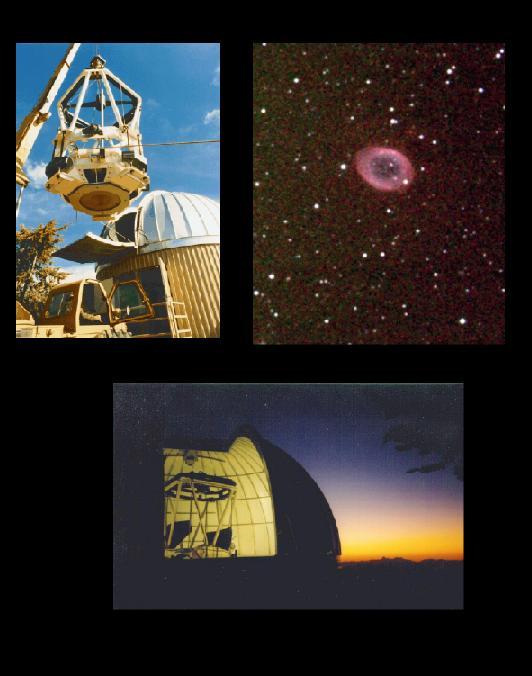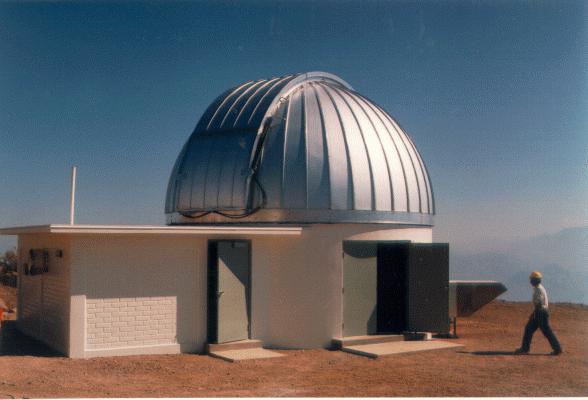Difference between revisions of "2 Micron All Sky Survey - 2MASS"
From CoolWiki
Jump to navigationJump to search| Line 3: | Line 3: | ||
| − | + | [[File:2 Mass north.jpg|200px|thumb|left|2MASS North Mt. Hopkins and M57 from IPAC image gallery]][[File:2 Mass south.jpg|200px|thumb|right|2MASS South Cerro Tololo CTIO Chili from IPAC image gallery]] | |
| + | |||
| + | '''[http://skynet.unc.edu/promptcam/ Click here to see a live webcam pointed at 2MASS south via SKYNET remote network.]''' | ||
| + | |||
| + | |||
| + | Wavelengths around 2 microns, J (1.25 um), H (1.65 um), and Ks (2.17 um) in the Near Infrared (NIR) were used in this survey which produced over 500 million sources in the point source catalog and 1.6 million sources in the extended source catalog (I don't know what this means yet:) These catalogs are publicly available. | ||
Probabley better in bullet form. | Probabley better in bullet form. | ||
Revision as of 03:20, 17 January 2013
2MASS is an all sky survey that used both northern and southern hemisphere telescopes to cover the whole sky from 1997 through 2001 with a final post processing release in 2003.
Click here to see a live webcam pointed at 2MASS south via SKYNET remote network.
Wavelengths around 2 microns, J (1.25 um), H (1.65 um), and Ks (2.17 um) in the Near Infrared (NIR) were used in this survey which produced over 500 million sources in the point source catalog and 1.6 million sources in the extended source catalog (I don't know what this means yet:) These catalogs are publicly available.
Probabley better in bullet form.
Add pics of actual scopes.
Add where it fits with other scopes and what it is typically used for???

